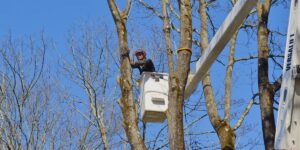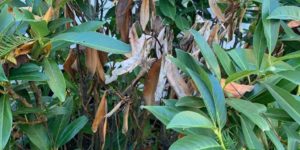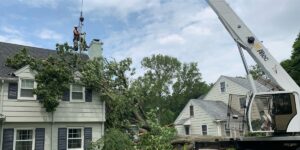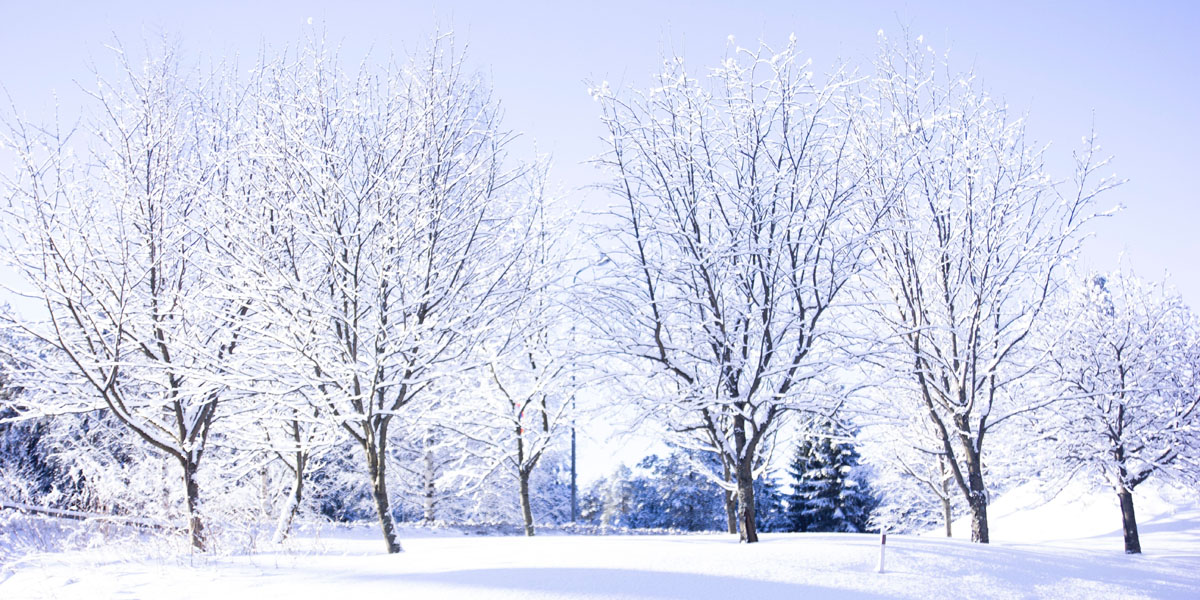Trees are built to withstand nature’s toughest challenges – strong winds, heavy snow, scorching heat. But what if the real danger isn’t above ground, but lurking beneath the soil? Girdling roots are a silent threat, slowly wrapping around a tree’s base and cutting off its ability to transport water and nutrients.
Over time, this hidden attack can weaken even the healthiest trees, leaving them stressed, vulnerable, and at risk of decline. Learn more about girdling roots, why they happen, and what you can do to prevent them from developing.
Key Takeaways:
- Girdling roots circle trunks and eventually “strangle” trees by preventing nutrient and water transport, increasing stress and potentially leading to tree failure.
- The three leading causes of girdling roots in Morris County are improper planting techniques (including leaving wire baskets or burlap on root balls), over-mulching, and compacted soil that prevents normal root expansion.
- Symptoms of girdling roots include thin crowns, early fall color, trunk leaning, crown dieback, stunted growth, and visible roots above ground near the trunk, though these symptoms could also indicate other tree problems.
- Some trees with girdling roots may not survive, but treatments like root collar excavation and root pruning can improve their chances.
- Certain tree species, including maples, oaks, beech, pine, and elm, are more susceptible to developing girdling roots.
What Are Girdling Roots?
Girdling roots are a fairly common problem for Morris County homeowners, but one that you shouldn’t ignore. Any root that circles the root flare has a chance to girdle the tree. They prevent the tree from transporting nutrients and water to and from the roots and the canopy.
The roots will grow tighter as the years pass and “strangle” the tree further. Without any correction, this will cause heavy stress to the tree and possibly kill it if the problem becomes severe enough.
The Causes of Girdling Roots
Circling roots don’t just pop up overnight and don’t happen to every tree. Instead, there are a few specific causes of girdling roots that will encourage their development.
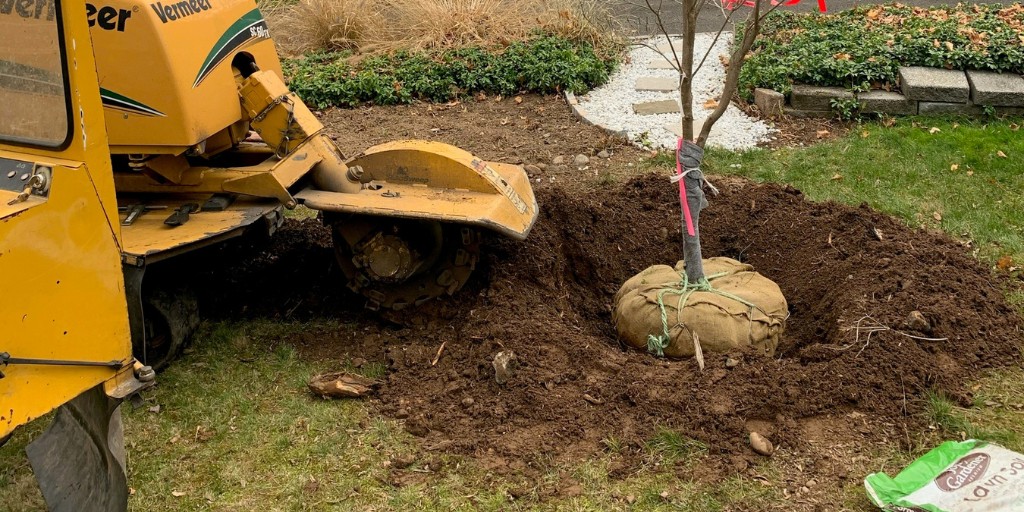
Planting a tree properly.
Improper Planting
Tree planting is not as simple as throwing a sapling in a hole. You need to ensure the hole is the proper size, as planting a tree too deep or too shallow will encourage girdling root production. Dig the hole as deep as the root ball and two to three times as wide.
Remove the wire basket and burlap around the root ball, as leaving it in place will restrict root growth.
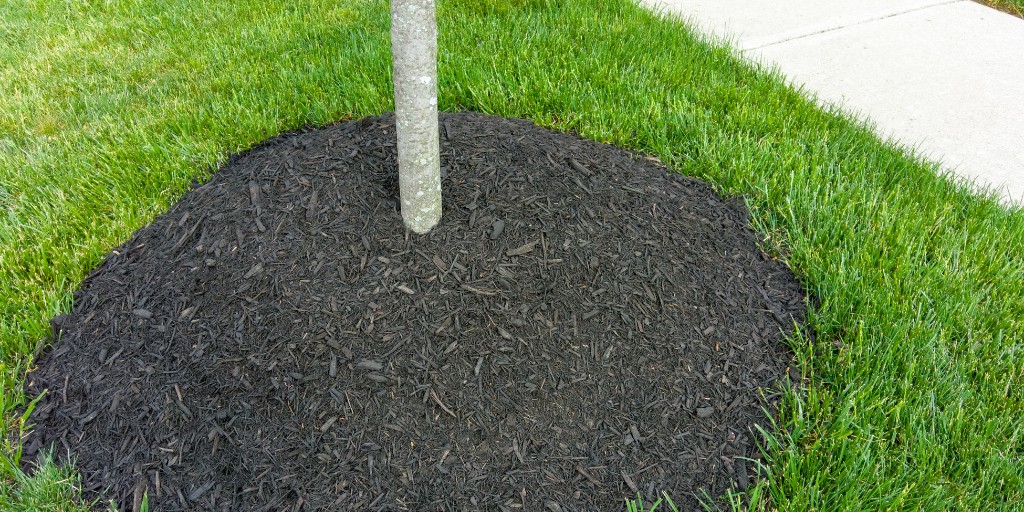
Piling a mulch volcano around your tree can lead to the development of girdling roots.
Over-Mulching Around Your Tree
While placing organic mulch around your tree has numerous benefits, too much of a good thing is bad for your trees. Over-mulching with a thick layer of wood chips that go right up to the trunk can encourage girdling roots. This effectively raises the grade under the tree’s canopy and can encourage roots to grow into the mulch and circle the tree.
Apply a 2-4–inch layer of mulch, and be sure it does not touch the tree’s trunk.
Compacted Soil
Compacted soil is a common problem in Morris County and is one of the leading causes of girdling roots. Soil compaction prevents the roots from expanding outward for food and water. With nowhere to go, the roots will circle the tree’s trunk as they grow, leading to girdling.
Soil compaction occurs for a few reasons:
- Foot and Vehicle Traffic: Consistent foot traffic or a heavy vehicle crossing over the soil can lead to compaction.
- Excessive Rainfall: As the rain continues to fall, its impact will compress the soil. Flooding (like the one Morris County saw in August 2024) will also leave soil compacted.
- Soil Types: Some soil types are more prone to compaction than others, and clay soils are particularly vulnerable.
One silver lining about compaction is that the typical soil in our area is the Rockaway series, which has good drainage and low clay content. While compaction can happen to any soil, it is less likely to happen from storms when the soil has good drainage.
Signs and Symptoms of Girdling Roots
Some of the common symptoms displayed by trees dealing with girdling roots include:
- Thin crown
- Early fall color on leaves
- Trunk leaning
- Crown dieback
- Stunted growth
- Roots appearing above ground near the trunk
- Lack of root flare
While many of these symptoms may indicate girdling roots, they could also indicate other problems, such as drought or a lack of nutrients in the soil. Have an arborist examine your trees to determine whether the issue is a circling root problem.
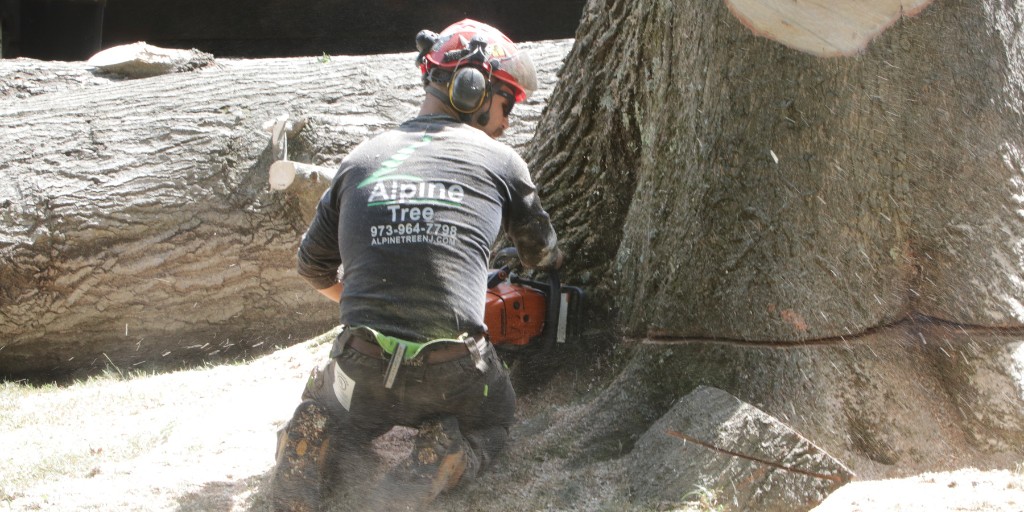
Girdling roots may lead to tree removal, as it is often hard to correct the problem after it develops.
Can a Tree with Girdling Roots Be Saved?
Yes, in many cases, a tree with girdling roots can be saved with the right intervention. While prevention is key, there are steps you can take if your tree already has circling roots.
The first step is uncovering the root collar to assess the extent of the issue. Arborists typically use an air spade or carefully dig by hand to expose the problem roots. Once revealed, they can determine the best course of action to correct the girdling and give your tree a better chance at recovery.
Root Pruning
Root pruning is typically the only way to try and correct circling. The process involves strategically cutting roots that circle the tree to try and reduce girdling. While this can potentially save it, there is intense debate amongst arborists on whether root pruning is viable for dealing with girdling.
“Even though the circling roots are harming the tree, they are also responsible for delivering water and nutrients to the canopy. Cutting them will relieve the girdling effect, but it will then leave the tree unable to get the needed nutrients from the soil. So even when we remove these troublesome roots, the tree doesn’t end up surviving.” – Konrad Polakowski, Alpine Tree Crew Lead
Fix the Underlying Problem
After root pruning, it’s time to eliminate the cause of the circling. This may entail aerating the soil or removing excess mulch from around the tree. If you don’t fix the original cause of circling, you’ll have to deal with girdling again.
Remove the Tree if the Problem is Too Severe
Unfortunately, many trees will not survive from girdling roots. The only option is to remove the trees, as they won’t be able to retain their balance without proper root spread to anchor the tree.
Frequently Asked Questions About Girdling Roots
Of all the things that may go wrong with your trees, we realize girdling roots may not be the first thing on a homeowner’s mind. To help you understand the damage they can do, we’ve compiled a list of common questions we get.
Will girdling roots kill any tree when they occur?
Not necessarily, as many trees will survive from girdling roots. If the problem is severe enough, girdling roots may lead to tree failure.
Are some trees more susceptible to girdling roots than others?
Some species are more prone to developing girdling roots, including:
- Red maple
- Sugar maple
- Oak
- American beech
- Pine
- Elm
If one of my trees has girdling roots, does that mean my other trees are at risk?
It depends on why girdling roots developed in the first place. If they occurred due to improper planting, you likely won’t have to worry about the problem in other trees. However, if the issue happened due to compacted soil or over-mulching, you’ll want to correct these issues to avoid girdling roots developing around your other trees.
Let Alpine Tree Help Save Your Trees from Girdling Roots
Girdling roots are a silent threat to your trees, but with the right care, many can be saved. Waiting too long puts your tree at risk of decline, structural instability, and potential damage to your property. But addressing the issue requires expert assessment and precise intervention to give your tree the best chance at a healthy future.
At Alpine Tree, our experienced team will diagnose the problem and take the necessary steps to correct it. If your tree can be saved, we’ll do everything possible to restore its health. And if removal is the only safe option, we’ll handle it professionally to protect your home and landscape. Don’t wait – call us today at 973-964-7798 or request an estimate online.

